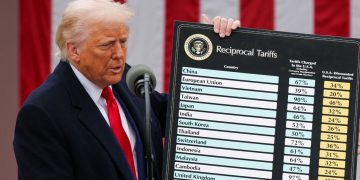New Delhi: Google has achieved an experimental milestone of scaling a logical qubit, demonstrating for the first time that it’s possible to reduce errors by increasing the number of qubits, its CEO Sundar Pichai has said.
In quantum computing, a qubit is a basic unit of quantum information that can take on richer states that extend beyond just 0 and 1.
“Our breakthrough represents a significant shift in how we operate quantum computers. Instead of working on the physical qubits on our quantum processor one by one, we are treating a group of them as one logical qubit,” said Pichai.
As a result, a logical qubit that Google made from 49 physical qubits was able to outperform one it made from 17 qubits, according to the research published in the journal Nature.
Google’s quantum computers work by manipulating qubits in an orchestrated fashion that it calls quantum algorithms.
The challenge is that qubits are so sensitive that even stray light can cause calculation errors — and the problem worsens as quantum computers grow.
“This has significant consequences, since the best quantum algorithms that we know for running useful applications require the error rates of our qubits to be far lower than we have today. To bridge this gap, we will need quantum error correction,” Pichai explained.
Quantum error correction protects information by encoding it across multiple physical qubits to form a “logical qubit,” and is believed to be the only way to produce a large-scale quantum computer with error rates low enough for useful calculations.
“Instead of computing on the individual qubits themselves, we will then compute on logical qubits. By encoding larger numbers of physical qubits on our quantum processor into one logical qubit, we hope to reduce the error rates to enable useful quantum algorithms,” said Pichai.
Three years ago, Google quantum computers were the first to demonstrate a computational task in which they outperformed the fastest supercomputers.
Someday, said Pichai, quantum computers will be used to identify molecules for new medicines, create fertilisers using less energy, design more efficient sustainable technologies from batteries to nuclear fusion reactors, and produce physics research that will lead to advances we can’t yet imagine.
“That’s why we’re working on eventually making quantum hardware, tools and applications available to customers and partners, including through Google Cloud, so that they can harness the power of quantum in new and exciting ways,” Pichai noted.
IANS





































